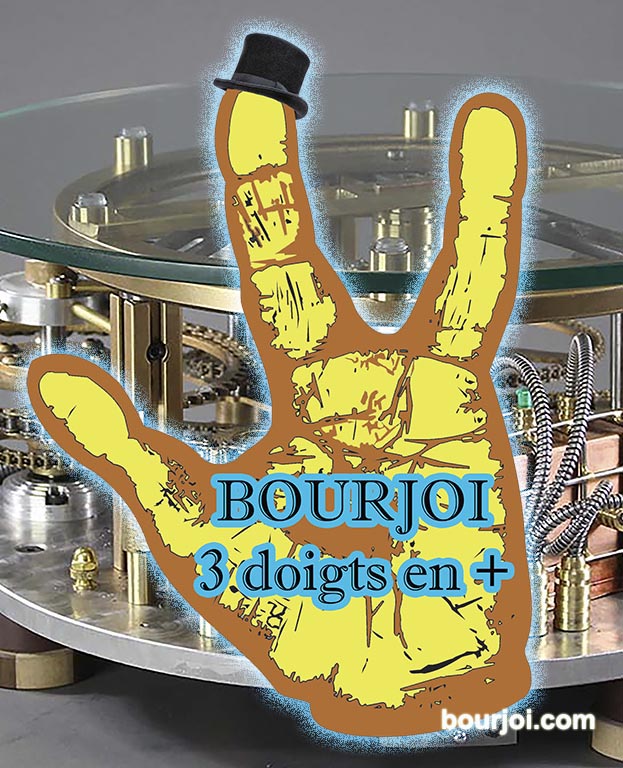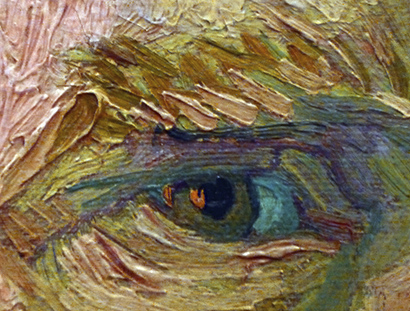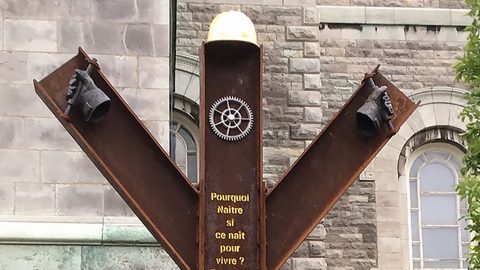English version follows below.
Certains événements, traits de caractère ou singularités physiques nous marquent profondément, parfois pour l’éternité, parfois au quotidien. Mes trois doigts de la main gauche, difformité de naissance, représentent un de ces stigmates, à la fois intime et public, à la fois visible et inexpliqué.
Il fut un temps où mes trois doigts de la main gauche étaient vus uniquement comme un handicap, ou plutôt, j’étais enfermé dans l’image de la « personne handicapée ». Mais il y a ici une confusion subtile, presque imperceptible pour ceux qui n’ont pas vécu cette expérience de l’intérieur, entre l’infirmité et le handicap.
L’infirmité, contrairement au handicap, est permanente, elle ne peut pas être réparée, elle ne peut pas être corrigée. C’est un fait brut, une réalité. Je suis né ainsi, il y a maintenant soixante-quatorze ans, et jusqu’à mon dernier souffle, cette infirmité demeurera.
Et pourtant, même après tout ce temps, mon propre corps, mon propre état, me semble encore étranger. Cette main, ma main, ne m’appartient pas vraiment. Il y a quelque chose d’inhumain dans cet avant-bras maigre, fait de ces os reliés ensemble, ces os secs et rigides, incapables de la fluidité que possèdent les autres, ceux avec lesquels je serre la main, ceux que j’observe.

Je ne sais pas quoi faire de cette main, sinon la subjuguer à l’autre, celle qui est charnue, musclée, vivante. Elle n’en est qu’un complément, une auxiliaire.
Je suis né en 1950, à une époque où le vaccin contre la poliomyélite n’avait pas encore été mis au point. Ayant souffert de neuf broncho-pneumonies doubles avant l’âge de six ans, j’ai passé de longs séjours à l’hôpital. Je n’ai commencé à interagir avec les autres enfants que plus tard. Pour ma famille, mes voisins, j’étais un être contagieux, un paria.
Certains allaient plus loin, assimilant l’infirmité physique à une déficience intellectuelle. Ainsi, j’étais un enfant qu’ils pensaient être affligé de plusieurs tares. Les autres enfants m’évitaient, moi, l’infirme, le différent, que certains parents jugeaient inapproprié de fréquenter.
Cette infirmité, qui pour moi n’était qu’une condition de naissance, une morphologie à apprivoiser comme n’importe quelle autre, s’est transformée sous le regard des autres en handicap. Ce qui n’était qu’un état est devenu un stigmate social, chargé de honte et d’exclusion.
Aujourd’hui, le mot « infirmité » a presque disparu du vocabulaire. Il ne reste que le terme « handicapé »qui est lui-même tombé en désuétude, qui englobe tout et tout le monde.
Est-ce une amélioration ou un recul ? Difficile de dire. Pour ma part, je préfère le terme infirmité, car il se contente d’exister, sans jugement, sans connotations sociales, sans nécessiter l’approbation la désapprobation des autres. Il suffit de s’adapter, comme on s’adapte à toute réalité immuable.
Dans les années 1950, dans mon milieu social, il n’y avait pas d’alternative. Mon infirmité était un billet pour l’exclusion, une barrière invisible mais palpable qui se dressait entre moi et le monde.
Autour de moi, à l’exception de ma mère, tous les adultes semblaient convaincus que je n’accomplirais jamais rien. Selon eux, je ne pourrais ni terminer mes études, ni occuper un emploi, encore moins fonder une famille. Je ne serais pas seulement handicapé d’une main, mais handicapé de la vie elle-même.
Était-ce différent ailleurs ? Je ne le sais pas. Mon univers se limitait à ce petit cercle familial où l’espoir semblait avoir peu de place.
La télévision fit son entrée dans notre foyer en 1952 ou 1953. Ma mère adorait la musique et était fascinée par la vie des grands musiciens comme Gershwin, Tchaïkovski et bien d’autres qu’elle regardait à l’écran. J’étais souvent à ses côtés, absorbant sa fascination pour ces êtres exceptionnels.
Je savais que j’étais moi aussi exceptionnel, mais pas dans le même sens que ces fabuleux musiciens. Mon exception résidait dans ma différence, une différence qui n’était pas glorifiée mais marginalisée.
Je n’avais aucune possibilité de devenir musicien, même si la musique m’offrait un refuge, un monde intérieur étendu et resplendissant, où je navigue encore aujourd’hui avec ravissement.
Mon père était ouvrier, son père avant lui machiniste. Ma mère, couturière, était la fille d’un menuisier.
Infirme et issu d’un milieu ouvrier, il était, contre toute attente, écrit que je devais trouver ma voie dans l’art lié à la matière. Je devais devenir un artiste de l’œil et de la main, pour prouver qu’être infirme ne suffisait pas à faire de moi un handicapé.
Pendant 25 merveilleuses années, j’ai appris mon métier dans les usines, sur les chantiers, tout en lisant sans relâche, tout en exposant mes créations dans 80 expositions.
Tout cela a fait de moi un artiste-ouvrier, et à 46 ans, après des études tardives mais captivantes, j’ai obtenu un baccalauréat suivi d’une maîtrise. Je suis ensuite devenu enseignant en arts plastiques dans l’adaptation scolaire au niveau secondaire.
J’ai surmonté le handicap. Plus personne ne semble le percevoir. J’ai franchi les obstacles, ceux des études, de l’emploi et de la vie familiale.
Il ne reste plus que l’infirmité. Mais cela importe peu finalement, car l’être humain s’adapte à tout, n’est-ce pas ?
Les véritables handicaps ne résident pas dans le corps, mais dans les esprits fermés, dans les préjugés, l’ignorance, l’indifférence, l’exclusion, et cette solitude qui peut tous nous paralyser.
Le handicap n’est plus. Ce qui demeure, c’est l’infirmité, ou bien ces trois doigts en plus qui ont fait de moi un artiste, un être façonné par une profonde intimité avec la matière, l’amour des proches et l’appel sublime de l’art.

English version.
Some events, personality traits, or physical singularities leave a deep mark on us, sometimes for eternity, sometimes on a daily basis. My three fingers on my left hand, a birth deformity, represent one of these stigmas, both intimate and public, both visible and unexplained.
There was a time when my three fingers on my left hand were seen only as a handicap, or rather, I was confined to the image of the « disabled person. » But there is a subtle confusion here, almost imperceptible to those who have not lived this experience from within, between infirmity and disability.
Infirmity, unlike disability, is permanent. It cannot be repaired, it cannot be corrected. It is a raw fact, a reality. I was born this way, now seventy-four years ago, and until my last breath, this infirmity will remain.
And yet, even after all this time, my own body, my own state, still feels foreign to me. This hand, my hand, doesn’t truly belong to me. There is something inhuman about this thin forearm, made of these bones bound together, these dry and rigid bones, incapable of the fluidity that others have, those with whom I shake hands, those I observe.

I don’t know what to do with this hand except to subject it to the other, the one that is fleshy, muscular, alive. It is merely a complement, an auxiliary.
I was born in 1950, a time when the polio vaccine had not yet been developed. Having suffered from nine double bronchopneumonias before the age of six, I spent long stays in the hospital. I didn’t begin to interact with other children until later. To my family, my neighbors, I was a contagious being, a pariah.
Some went further, conflating physical infirmity with intellectual deficiency. Thus, I was a child they believed to be afflicted with several flaws. Other children avoided me, me, the infirm one, the different one, whom some parents deemed inappropriate to associate with.
This infirmity, which for me was nothing more than a birth condition, a morphology to be tamed like any other, was transformed under the gaze of others into a disability. What was merely a state became a social stigma, loaded with shame and exclusion.
Today, the word « infirmity » has almost disappeared from the vocabulary. All that remains is the term « disabled, » which itself has become outdated, and which encompasses everything and everyone.
Is this an improvement or a step back? It’s hard to say. For my part, I prefer the term infirmity, as it simply exists, without judgment, without social connotations, without requiring the approval or disapproval of others. One merely has to adapt, as one adapts to any immutable reality.
In the 1950s, in my social environment, there was no alternative. My infirmity was a ticket to exclusion, an invisible but palpable barrier standing between me and the world.
Around me, with the exception of my mother, all the adults seemed convinced that I would never accomplish anything. According to them, I would neither complete my studies nor hold a job, let alone start a family. I wouldn’t just be disabled in one hand, but disabled in life itself.
Was it different elsewhere? I don’t know. My universe was confined to that small family circle where hope seemed to have little place.
Television entered our home in 1952 or 1953. My mother adored music and was fascinated by the lives of great musicians like Gershwin, Tchaikovsky, and many others whom she watched on screen. I was often by her side, absorbing her fascination for these exceptional beings.
I knew that I was exceptional too, but not in the same way as these remarkable musicians. My exception lay in my difference, a difference that wasn’t glorified but marginalized. I had no possibility of becoming a musician, even though music offered me a refuge, an expanded, radiant inner world where I still find delight today.
My father was a worker, his father before him a machinist. My mother, a seamstress, was the daughter of a carpenter.
Infirm and from a working-class background, it was, against all odds, written that I would find my path in the art connected to material. I had to become an artist of the eye and the hand, to one day prove that being infirm wasn’t enough to make me disabled.
For 25 wonderful years, I learned my trade in factories, on construction sites, all while reading tirelessly, all while exhibiting my creations in 80 exhibitions.
All of this made me become an artist-worker, and at 46, after late but captivating studies, I earned a bachelor’s degree followed by a master’s. I then became a teacher of plastic arts in special education at the high school level.
I have overcome disability. No one seems to perceive it anymore. I have surmounted the obstacles—those of education, employment, and family life.
All that remains is the infirmity. But that matters little in the end, for humans adapt to everything, don’t they?
The true disabilities do not reside in the body but in closed minds, in prejudice, ignorance, indifference, exclusion, and that solitude that can paralyze us all.
Disability is no more. What remains is the infirmity, or perhaps those three extra fingers that made me an artist, a being shaped by a profound intimacy with material, loved ones and the sublime call of art.







